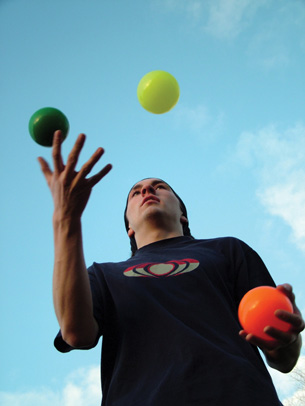Module 6
1. Module 6
1.18. Lesson 4
Module 6—Mendelian Genetics: The Transmission of Traits to the Next Generation
Lesson 4—Dihybrid Crosses

© TimmyQ/shutterstock
 Get Focused
Get Focused
Working with one gene at a time is like playing catch. It takes a few tosses in the back yard with your mom, dad, or an older sibling, but after a bit of practice, it becomes second nature. Working with two or more genes is like juggling—more balls to keep track of, but the basic concepts are the same. All of the inheritance types you have studied still apply, but now you will apply the principles to two genes, each with their own alleles. The total movement is trickier, and the process might take a bit more practice. This lesson may take you a little longer to complete, but the practice that you do will lead to success in your study of genetics.
In this lesson, you will learn how to follow the inheritance of two separate traits at the same time. You will appreciate how the movement of alleles for one trait does not effect the movement of alleles for the other trait during the formation of gametes.
In this lesson, the following focusing question will be examined:
- How do scientists track the inheritance of more than one trait at a time?
 Module 6: Lesson 4 Assignment
Module 6: Lesson 4 Assignment
Your teacher-marked Module 6: Lesson 4 Assignment requires you to submit the following:
- a lab on mouse genetics (two traits) for assessment.
Download a copy of the Module 6: Lesson 4 Assignment to your computer now. You will receive further instructions on how to complete this assignment later in the lesson.
Continue to develop your flash cards. In this lesson you may find that examples of Punnett squares are a useful illustration of your definition.
You must decide what to do with the questions that are not marked by the teacher.
Remember that these questions provide you with the practice and feedback that you need to successfully complete this course. You should record the answers to all of the questions in this lesson and place those answers in your course folder.
Remember you also have the option of trying additional questions from the textbook for further practice. Consult with your teacher for the answers to these questions. The Key will also provide you with many Diploma Exam-style multiple-choice, numerical-response, and written-response questions that will be an excellent review of the module. Practising your responses to these types of questions is good preparation for the Diploma Exam.